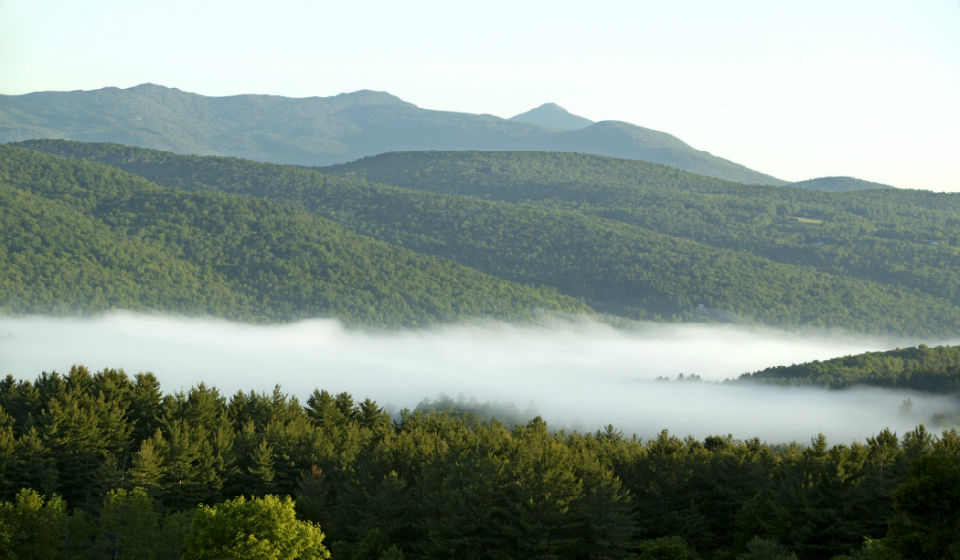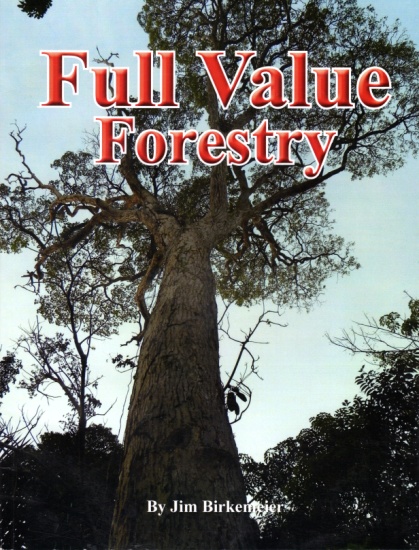Book Review: Full Value Forestry
Author:Allen Yale | Organization:Tree Farmer and Committee Member | Date:June 1, 2018Many of us have complained that the main obstacle to successful forest management is the lack of a market for low quality wood. Jim Birkemeier, a forester/woodland owner/wood processor in Wisconsin feels that he has the answer for himself. He has adopted what economists call vertical integration, in that he engages in every step of the process of wood product management from growing the tree to processing the wood, to selling directly to the final consumer.
A trained forester, Birkemeier opted out of managing other people’s forests to maximizing the potential of the two hundred acres of his own woodlot, to get the full value of the wood he was growing. He opens the book with the following quote: “Our family business has learned to earn one thousand dollars from a small tree, three thousand dollars each for trees the timber industry would say are just firewood, four thousand dollars per average tree that we grow on each acre every year, and ten thousand dollars – or more – for a good tree.” (p. 1)
He is able to support his family on his two hundred acre hardwood woodlot. He was able to generate $300,000 gross annually and employ eight members of his family. How does he do it? His forest management follows the principles of Dauerwald. Nature succession and natural regeneration and not harvesting a tree before it is economically and physically mature. He harvests, on average, one tree per acre per year. He employs what he calls “Arthroscopic Logging, using the smallest equipment possible, doing the least damage and most good for any commercial timber harvest.” In Birkemeier’s case, he relies on a farm tractor with a Farmi winch or an ATV and skidding arch to bring the logs to the trail, where he picks up the logs with an ancient Iron Mule forwarder.
He then saws the logs into lumber with a WoodMizer sawmill. He specializes in mixed species flooring with character. This allows him to take advantage of the small 6” trees of whatever species his woodlot provides. He then dries them using his Solar Cycle Lumber Kiln to 6% moisture content.
The real secret to Birkemeier’s success is from here on out; after he has produced kiln dried hardwood lumber. He now turns that lumber into hardwood flooring. This, his crew installs for the customer and then sands and finishes. Thus Birkemeier’s operation is fully vertically integrated from growing the trees to the finished floor installed in the customer’s home. His operation also makes custom cabinetry, countertops and furniture. Of course, full vertical integration entails much greater capital costs and each step engages the woodlot owners’ personal time, but he is a demonstration that an individual with only two hundred acres of hardwood can support eight individuals while using the fairly low quantity of wood his forest can sustainably provide.
I must warn readers that along with the great detail Birkemeier provides on how his operation works, you will have to put up with his rants against “Big Timber” and its efforts to exploit woodlot owners, export jobs, and ship American logs overseas.
That being said, for anyone considering increasing their income from their woodlot, this is a book you might want to explore. I myself have explored steps toward vertical integration. Instead of selling stumpage, I harvest my own trees, most of which I sell as logs traded roadside. But I do saw some logs into boards which I air dry undercover and occasional sell. I have even made and sold a couple of small sheds made of my own lumber.
Birkemeier, Jim, Full Value Forestry: A new timber market that keeps many values of our forest and trees in the local community, Spring Green WI: Timbergreen Foresty, 2013, pp86, $16.00



